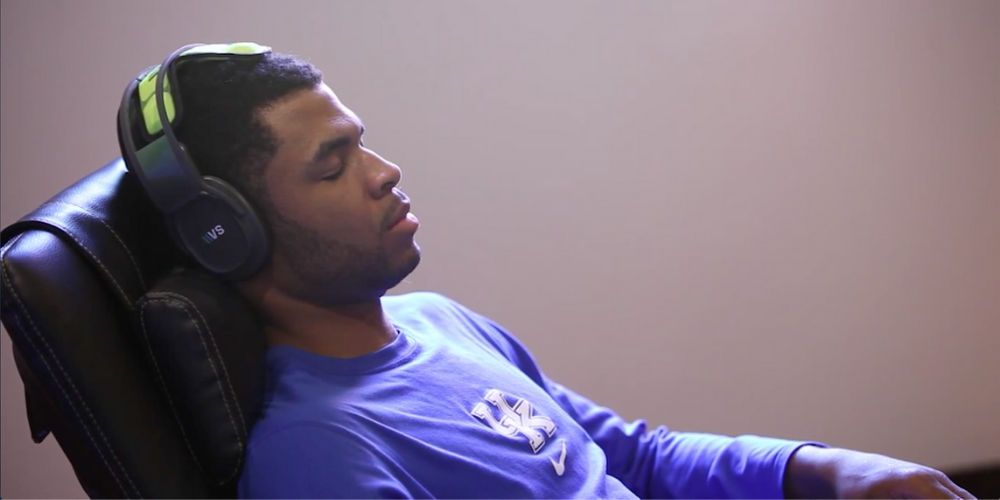Should You Take a Nap? This is What the Experts Say.
The nap has gotten a bad rap. For children, naps are celebrated. For adults, they’re often demonized. Is all that negative press justified? In honor of National Napping Day, we’ve gathered the latest information from leading experts to help answer that age-old question: to nap or not to nap?
The quick answer
When it comes to the question of whether adults should nap, the general consensus is - it depends. Nate Masterson of Maple Holistics explains it well: “If you’re getting enough good quality sleep throughout the night, you shouldn’t be needing to nap during the day. That being said, it’s important to honor your body’s needs.”1
We’ll go into the specifics later, but most sleep researchers agree on two things. First, if you need a little boost of energy or a moment of relaxation every now and then, a nap can be beneficial.2 However, naps are not a substitute for regular sleep.3
The natural sleep cycle
Before we can take a deep dive into napping, we must understand sleep in general.
We naturally feel alert upon waking and get more tired throughout the day. This is called homeostatic sleep drive.4 Upon giving in to that sleep drive, healthy adults experience four stages of sleep that make up a sleep cycle. In an average night of sleep, an individual will complete several sleep cycles, each lasting between 90 and 110 minutes.5
Stages 1 and 2: The first two stages consist of light non-Rapid Eye Movement (REM) sleep. As you transition from wakefulness to rest, your brain activity, heart rate, and breathing all slow.6 It is relatively easy to be awoken from these light sleep stages.
Stage 3: This is often referred to as slow-wave sleep. During this stage of deep, non-REM sleep, your brain activity, heart rate, and breathing reach their lowest levels of any point in your sleep cycle.4 To feel well-rested in the morning, you need slow-wave sleep. It is difficult to wake someone during this stage of sleep; when awoken at this point, individuals often experience grogginess.6
REM Sleep: Rapid eye movement sleep is the last stage of the sleep cycle. The first round of REM sleep typically begins approximately 90 minutes after you fall asleep.6 As the name suggests, your eyes move back and forth rapidly during REM sleep. Your arms and legs become paralyzed, while your breathing and heartbeat increase. Brain activity in this stage is similar to that seen when a person is awake; as such, dreams most commonly occur during REM sleep.6
The ideal nap
If you are feeling drawn to take a nap, follow these tips to optimize your experience and ensure that your nap doesn't interfere with your natural sleep cycle.
Length: Research indicates that the optimal length of time for a nap is 10 to 20 minutes.2 A nap of this length will keep you in the first stages of sleep, allowing you to wake up feeling refreshed. Napping longer than 20 minutes puts you at risk of entering into deeper stages of sleep, which can leave you feeling tired and disoriented when you wake up. If you are particularly sleep-deprived, a 90 to 120 minute nap may be preferable, as this can allow you to complete a full sleep cycle.7
Timing: Between 12:00pm and 3:00pm, most people experience tiredness or low energy. This is the ideal time to take a nap.8 Anything earlier or later than this can interfere with your circadian rhythm and disrupt your sleep at night. Experts also discourage people from taking naps right before important tasks, as even a short nap can result in temporary grogginess.8
Conditions: We sleep best in cool, dark, quiet places.2 If necessary, use an eye mask and ear plugs to help you meet these conditions. To wake up from a nap with less grogginess, consider consuming a small amount of caffeine right before your nap. Since caffeine takes about 30 minutes to take effect, this will give you an added boost as you wake up from your nap.3
The benefits of napping
In conjunction with healthy sleep habits, naps that follow the above guidelines can offer several benefits. After taking short naps, study participants demonstrated improvements in reaction speed and memory.7 Naps can also enhance mood and create feelings of calmness and alertness.2 In several studies, short naps have even been linked to reductions in heart disease.1
The risks associated with napping
As we previously explained, naps should not be used to replace sleep at night. Sleep deprivation of this kind is dangerous - it can lead to impaired cognition, as well as a range of health issues, including heart disease, diabetes, and depression.7
People with insomnia or other sleep disorders should avoid taking naps altogether, unless directed to do so by their physicians. Napping during the day can interfere with a person’s natural sleep drive, making it even harder to sleep at night.2
Feeling the urge to nap even after a full night of sleep may be a symptom of an underlying health issue.8 If you are experiencing frequent daytime fatigue, talk to your doctor.
The best way to feel well-rested
An occasional nap after a poor night’s sleep or a busy morning can give you a valuable energy boost. But, creating a healthy sleep schedule should be your first priority. Find tips for getting a better night’s sleep here.
Need a little extra help? Versus is the perfect addition to your bedtime routine. Our Stress Exercises can teach you how to calm your busy brain before bed, allowing you to drift off to sleep quickly. Learn more here.
Wishing you sweet dreams.
References
1. Krans, B. (2019). Is Napping Good or Bad for Your Health?. Healthline, 15 Sept. 2019. Retrieved 02 March 2021 from https://www.healthline.com/health-news/is-napping-good-or-bad-for-your-health
2. Mayo Clinic (2020). Napping: Do's and don'ts for healthy adults. Mayo Clinic, 13 Nov. 2020. Retrieved 02 March 2021 from https://www.mayoclinic.org/healthy-lifestyle/adult-health/in-depth/napping/art-20048319
3. The National Institute for Occupational Safety and Health (NIOSH)(2020). Napping, an Important Fatigue Countermeasure. Centers for Disease Control (CDC), 1 April 2020. Retrieved 02 March 2021 from https://www.cdc.gov/niosh/emres/longhourstraining/napping.html
4. Pacheco, D. (2020). Does Napping During the Day Affect Your Sleep at Night?. Sleep Foundation, 09 October 2020. Retrieved 02 March 2021 from https://www.sleepfoundation.org/how-sleep-works/does-napping-impact-sleep-at-night
5. Cleveland Clinic (2020). Sleep Basics. Cleveland Clinic, 07 Dec. 2020. Retrieved 02 March 2021 from https://my.clevelandclinic.org/health/articles/12148-sleep-basics
6. National Institute of Neurological Disorders and Stroke (2019). Brain Basics: Understanding Sleep. National Institute of Neurological Disorders and Stroke, 12 August 2019. Retrieved 02 March 2021 from https://www.ninds.nih.gov/Disorders/Patient-Caregiver-Education/Understanding-Sleep
7. Santos-Longhurst, A. (2019). Everything You Need to Know About the Benefits of Napping. Healthline, 19 March 2019. Retrieved 02 March 2021 from https://www.healthline.com/health/how-long-should-i-nap
8. Wolff, C. (2017). 7 Times You Should Never Take a Nap, No Matter What. Bustle, 30 June 2017. Retrieved 02 March 2021 from https://www.bustle.com/p/7-times-you-should-never-take-a-nap-no-matter-what-67601
Please note: The Versus system is not regulated by the FDA as a medical device. It is intended to promote and encourage healthy lifestyle choices; it is NOT intended for use in the diagnosis of disease or other conditions, or in the cure, mitigation, treatment, or prevention of disease. This article and this product are not substitutes for medical advice and care. If you have any questions or concerns about a medical condition, you are encouraged to consult your physician or other qualified health care provider for specific advice.





